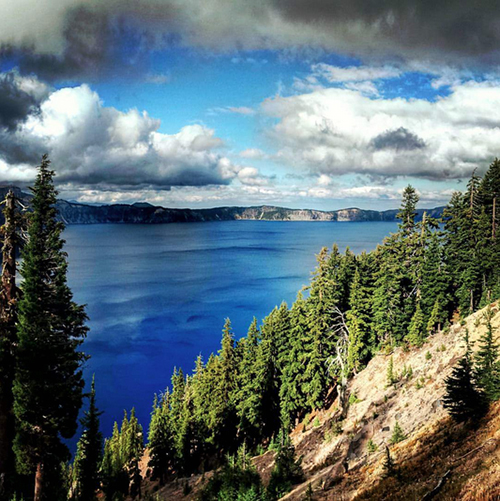
by Jaala Freeman
Backpacking is full of excitement: orange and purple sunsets, painted mountains, expansive views, deep green forests, raucous animals, fresh air and a thriving community. All of this can keep a hiker going, especially when the distance to travel is less than 400 or 500 miles. At this length, a hike can be decompressing and electronically liberating; it serves as a way to reconnect with nature and one’s own desires. We say it’s “just walking,” even though the logistics tend to be a little more involved. But it can end up being just that simple…just walking.
Yet, at some mile point, morale starts to wain and walking becomes hard. “I just am not having fun right now. I feel like I’m working,” said Britt Juarez, just 300 miles from the Oregon-California border (and 1,400 miles hiked so far). Somehow her summer wilderness adventure had become more tedious than exciting. And this phenomenon is not unique to Britt. In fact, most thru-hikers hit this same wall somewhere along their hike. But the reasons vary from fatigue to natural impediments.
This year on the PCT a major issue for thru-hikers has been the wildfires that have spanned much of Oregon and Washington. For many that meant inhaling smoke for hundreds of miles, sleeping with the threat of fire looming, skipping closed sections that may be highlights of the trail–all with water shortages and blistering heat. This situation caused several hikers to question whether they should continue, for safety reasons as well as the type of experience they were looking for out here. Many slowed themselves down, like Amyray “Mama Squirrel” Hankinson and Grant “No Boundary” Hankinson, who decided their bodies needed the rest anyway. Others chose to alter their finish destination and some chose to end their hikes altogether.

The situation held a tangible level of stress and anxiety. Thru-hikers were buzzing about whether the fires would still be going in Crater Lake National Park, Mount Adams Wilderness and the Chelan Fire Complex in northern Washington. Negativity was in the air. Would we have to hitch around them? Would we have to sit and wait for them to be put out? If we did hitch around, would we be able to get back to the trail? Would we road walk? How bad is the smoke inhalation? With just about every hiker concerned, there was hardly a moment when someone wasn’t talking about it.
“Then I remembered that those problems were for future me,” said Tim “Saint Croix” Tabat, speaking about the Crater Lake closure, “By the time I arrived there, everything was business as usual.” Having focused on the hiking at hand, Saint Croix had continued his hike and ended up seeing Crater Lake at its finest.
Now, most have made it to Washington and are somewhere within 500 miles of the Canadian border. The Crater Lake closure is open, as is the Mount Adams Wilderness and the Chelan area of northern Washington. Given a few weeks, hikers now have a green light to finish. Yet, many are still dropping out. The hiker blues can affect anyone, whether it’s time, weather, fatigue, family or injury. Sometimes just taking a couple days to have a side adventure or reconnecting with a group and hiking with trail friends can make all the difference. The sense of community and adventure comes back, and a hiker that may have been discouraged finds the desire to continue to the end.

There are many reasons that hikers choose a thru-hike. And many reasons that hikers choose to end a thru-hike. But if a hiker can pull away from a situation for a moment, and gain perspective, then perhaps the hiker blues will not end their hike, but will simply be another part of their experience–what makes them a thru-hiker.
